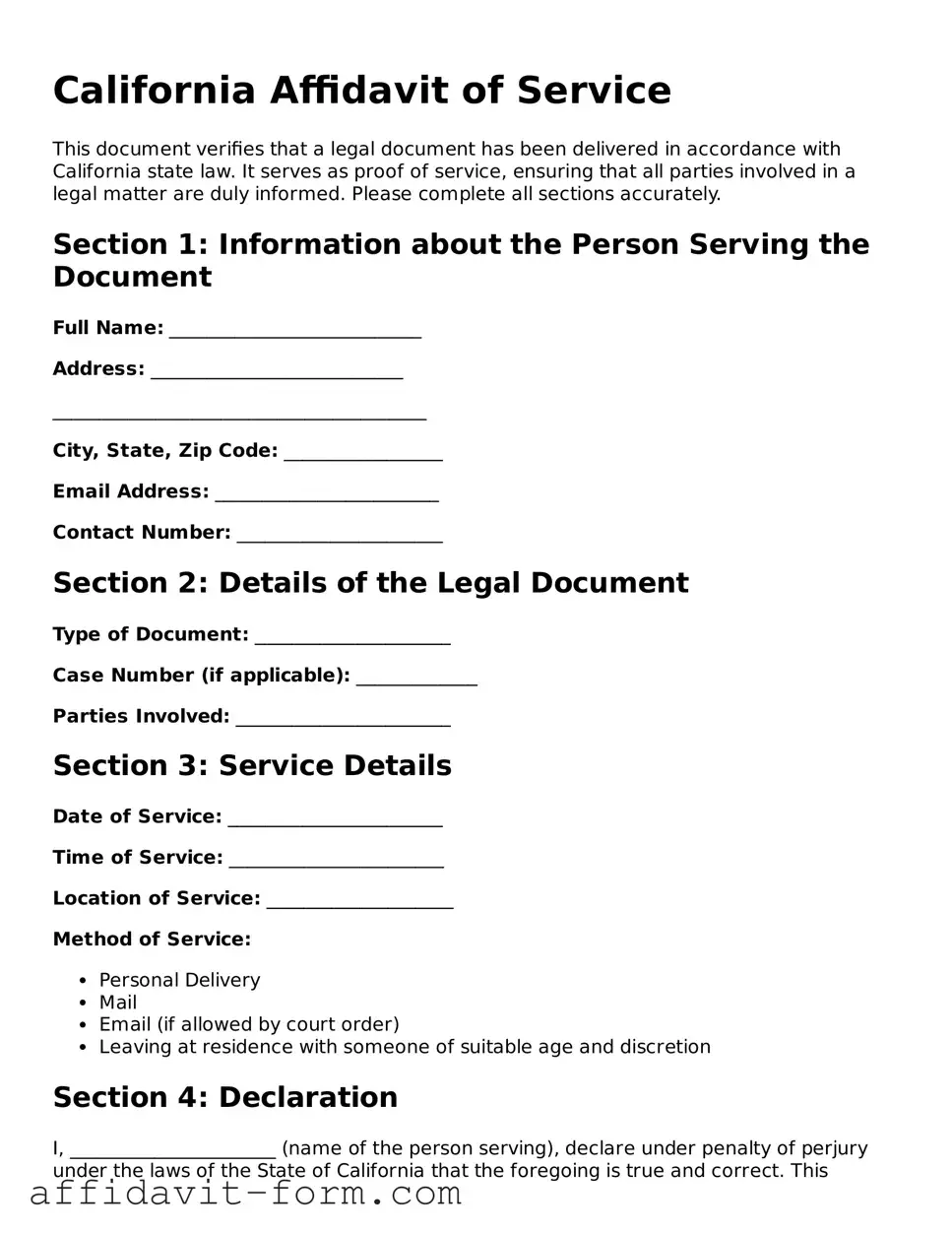California Affidavit of Service
This document verifies that a legal document has been delivered in accordance with California state law. It serves as proof of service, ensuring that all parties involved in a legal matter are duly informed. Please complete all sections accurately.
Section 1: Information about the Person Serving the Document
Full Name: ___________________________
Address: ___________________________
________________________________________
City, State, Zip Code: _________________
Email Address: ________________________
Contact Number: ______________________
Section 2: Details of the Legal Document
Type of Document: _____________________
Case Number (if applicable): _____________
Parties Involved: _______________________
Section 3: Service Details
Date of Service: _______________________
Time of Service: _______________________
Location of Service: ____________________
Method of Service:
- Personal Delivery
- Mail
- Email (if allowed by court order)
- Leaving at residence with someone of suitable age and discretion
Section 4: Declaration
I, ______________________ (name of the person serving), declare under penalty of perjury under the laws of the State of California that the foregoing is true and correct. This statement is executed on (date) ______________ at (location) _______________________.
Signature
__________________________________
Date: ____________________________
